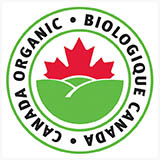
AIn December 2020, the Canadian General Standards Board revised its organic standard (CAN/CGSB 32.310-2020) and the Permitted Substances Lists or PSL (32.311-2020). The revisions occur about every five years, and several changes and clarifications may affect organic handlers and growers. While new operations should follow this version of the standard and PSL, existing operations have until December 2021 to come into compliance. QAI will be updating all forms and documentation to reflect the changes made.
Highlights of key changes:
- The definition of genetic engineering (GE) was updated to include gene-editing technology and synthetic biology
- Certifiers will now assess how organic farm management promotes ecosystem health. Farmers will need to show how their operations promote biodiversity and include wildlife/pollinator habitat.
- For poultry, a new requirement for shade on pasture was added to encourage use. By November 2025, at least 10% of the required range area must have overhead cover (which could include trees, roof overhang, constructed canopies and netting).
- Allowance for “enriched verandahs” (or winter gardens) for laying hens was made; these can be added where the layers do not have access to their outdoor runs due to weather or disease constraints.
- Poultry and pigs may be fed all sources of lysine and methionine to meet dietary requirements, but the operator first must try to source non-GE sources of these amino acids.
- Phytase can be fed to increase the absorption of phosphorous, thus reducing phosphorous loss in manure; all sources of phytase are allowed for use even if derived from GE sources.
- For processors, there is a clarification about when to exclude the water in an ingredient from an organic calculation. Specifically, “Any use of an ingredient, to which water or salt has been added by a prior processor and is declared as water or salt on the ingredient declaration of the finished product, is required to exclude this added water or salt when calculating organic percentages.” For example, this will require that water be removed from an organic soy base used to make soymilk, but not from an organic tamari used in a salad dressing, because water is not a sub-ingredient of tamari on the finished product ingredient panel.
- For processors, there are some new PSL 7.3-listed cleaners allowed without removal for food contact or food contact surfaces. These include lactic acid, microorganisms and hypochlorous acid (generated via electrolyzed water).
- For detergents and surfactants, a clarification states that they should meet the requirements for readily biodegradable, inherently biodegradable or ultimate biodegradation, as defined by the Organisation for Economic Co-operation and Development. These definitions are commonly used in the industry.
- The PSL now requires both a safety data sheet (SDS) and a label to be submitted for review for cleaners and sanitizers used before an organic run.
